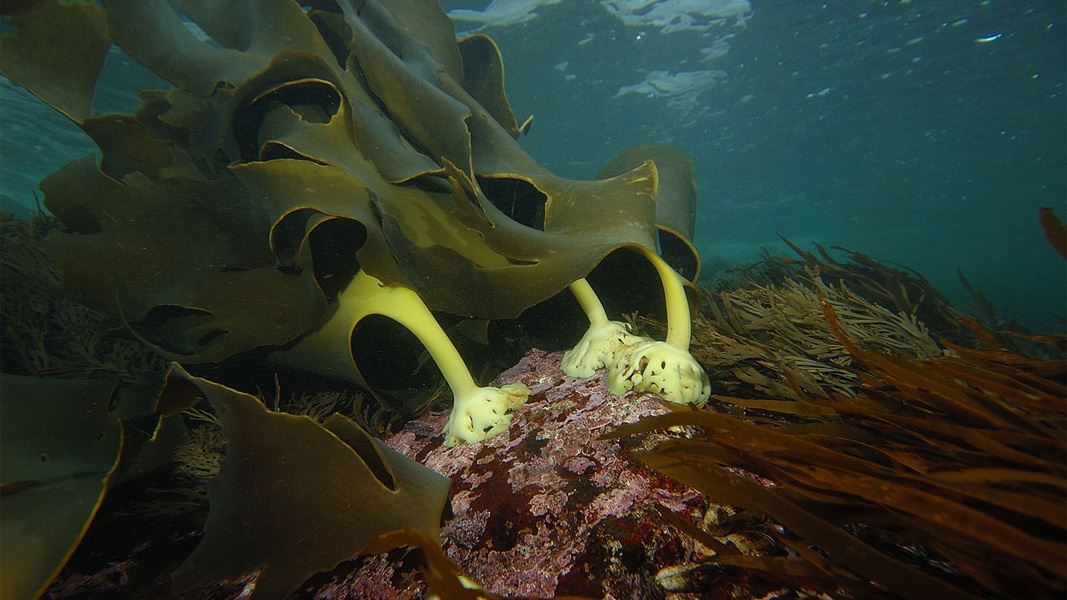It has to be amazingly tough to survive the pounding waves and sharp rocks. It also has to be able to hold on to the rocks incredibly well, using a woody, root-like structure called a 'holdfast'.
This video features Tiny Metzger who has been making pōhā (bull kelp bags encased in tōtara bark) for as long as he can remember. Using bull kelp and totara bark for food storage containers is an innovation at least 100 years ahead of its time.
Video
If you watch rimurapa swirling in the waves for a while, you'll notice its blades stay floating on the surface of the water instead of getting sucked under. This is because of their honeycomb structure, with numerous air-filled pockets inside them.
Māori took advantage of rimurapa's strength and structure, finding that the blades could be hollowed out and dried to make tough and waterproof bags (pōhā). These were then filled with tītī, sealed with fat, and bound on the outside with tōtara bark and flax baskets. Preserved like this, the tītī would last for years.
There were many other uses for rimurapa though. The stems could be dried and carved into balls or other shapes, and used green as bags to steam shellfish in, or to carry water in. They were even used for sport; one large pōhā on each side of the body could be used as floats to surf in the waves.
How to harvest rimurapa for pōhā-tītī (bags for storing tītī).
